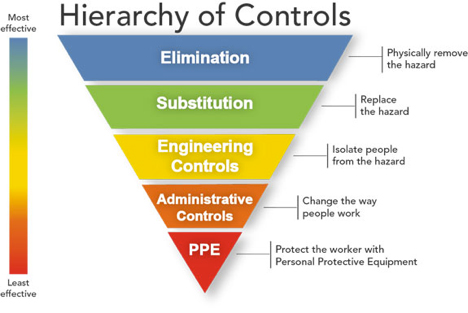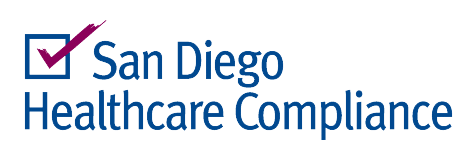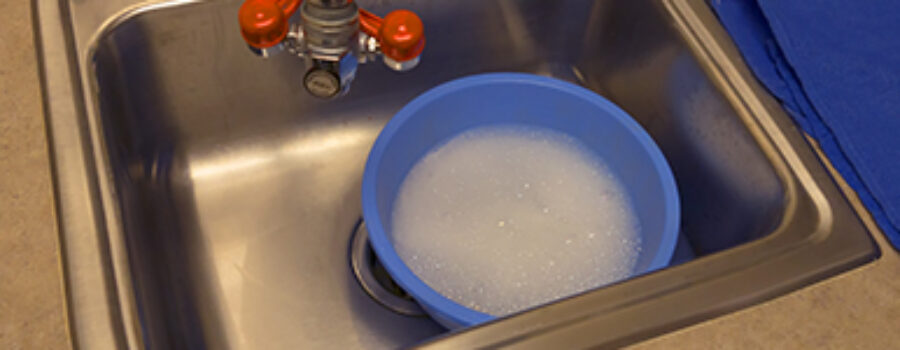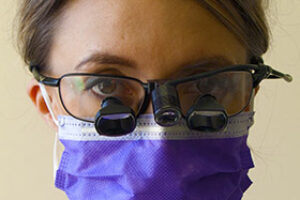Overview
Controlling exposures to occupational hazards should be one of the most important goals for your practice. Using the Hierarchy of Controls can provide an effective method in developing a program to safeguard your staff and office.
The control methods include, in order of increasing effectiveness, Personal Protective Equipment (PPE), Administrative Controls, Engineering Controls, Substitution, and Elimination.

Let’s use the chemical “sterilant” glutaraldehyde as an illustration for the Hierarchy of Controls analysis. Glutaraldehyde (trade names include Cidex®, Metricide®, and Wavicide®) is used because it is believed to sterilize heat-sensitive instruments that would otherwise be destroyed by autoclaving.
Unfortunately, there are numerous drawbacks associated with glutaraldehyde that disqualifies it as a sterilizing agent in many healthcare environments.
First, glutaraldehyde must be diluted with the proper amount of water to produce a solution of correct concentration. Second, this solution must be monitored with test strips to ensure its continued microbicidal ability. Third, the solution has an expiration date beyond which it no longer reliably kills microbes. Fourth, a variety of adverse health effects have been reported in personnel exposed to glutaraldehyde. These effects include throat and lung irritation, asthma, difficulty breathing, nose bleeds and irritation, burning eyes and blindness, dermatitis, hives, headaches, and nausea.
Of the drawbacks listed above, the dilution, test strip monitoring, and discarding on the correct expiration date are all subject to human error. Regardless of human error, the health effects including blindness and asthma are always present.
The fifth and perhaps most compelling issue associated with gluteraldehyde is the fact that once an instrument is removed from the liquid and rinsed, that instrument cannot be considered sterile (assuming it was ever actually sterilized).
You might ask, “Why use gluteraldehyde at all?” Answer: Gluteraldehyde is actually needed whenever the manufacturing instructions call for it – typically for instruments (e.g., optical systems such as endoscopes) that are heat-sensitive. In cystoscopy, a procedure commonly performed in urology to detect urinary tract pathology, a flexible endoscope is used. Because the endoscope is heat sensitive it requires a chemical sterilant like gluteraldehyde.
Fortunately, in general dentistry, virtually everything we use is either autoclavable or disposable after a single use.

How best to minimize employee exposure to dangerous chemicals with questionable efficacy like gluteraldehyde?
Consider using the Hierarchy of Controls illustrated at the top of this blog.
Elimination & Substitution
In general dentistry, substituting heat-sensitive instruments with autoclavable ones would allow us to eliminate a dangerous chemical such as gluteraldehyde. Older, heat-sensitive products like tooth-colored shade guides and cheek retractors should be replaced with autoclavable products. While upgrading the older products with new ones can be costly, significant confidence in providing safe treatment can come from using sterile equipment as opposed to that which is merely disinfected.
Engineering Controls
If for some reason heat-sensitive equipment cannot be replaced with autoclavable equipment, then engineering controls can be used to protect staff members. In the case of gluteraldehyde, an engineering control would include a standard laboratory chemical hood (previously called a laboratory fume hood), which would capture and eliminate gluteraldehyde emissions at the point of preparation and use.
Administrative Controls
When exposure risk is poorly controlled, administrative controls are often used. While these controls may seem relatively inexpensive to implement they can be expensive over the long term and compliance with them requires much more effort by the staff. Administrative controls for gluteraldehyde could include creating job-rotation schedules for its preparation, use, and disposal; training on spill prevention; and implementing proper labeling and storage.
PPE
PPE creates barriers between the worker and chemicals like gluteraldehyde. The routes of exposure can include skin contact, inhalation, ingestion, eye, and entry through an open wound. The Safety Data Sheet (SDS) specifies the proper PPE to use to prevent exposures and what to do in case of exposure. PPE includes liquid-repellant laboratory coats and impervious aprons, closed-toe shoes, long pants, safety goggles, face shields, impervious gloves, and respiratory protection.
Using the Hierarchy of Controls
This Hierarchy of Controls system provides a useful framework for designing a safety program in your office. The chemical gluteraldehyde was used as an example. However, any process, chemical use, or procedure can be analyzed with this system to create the safest possible work environment for your staff members.




